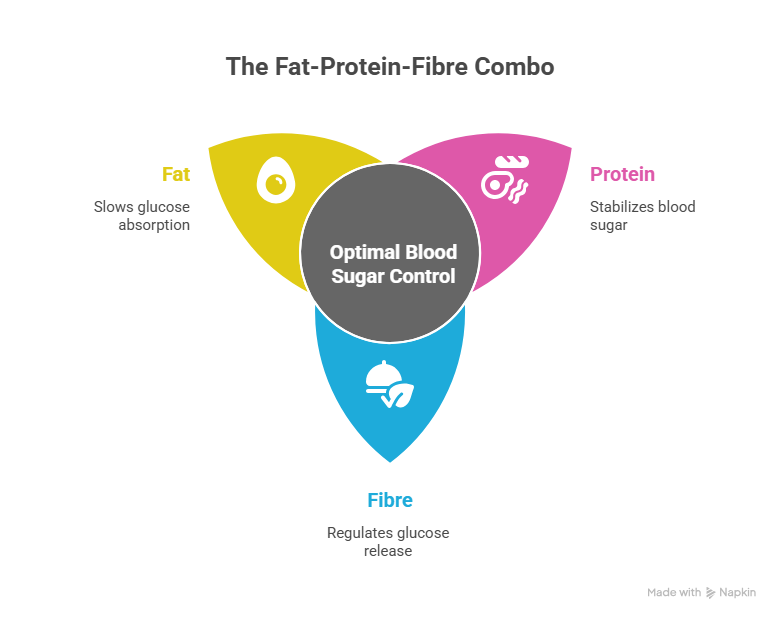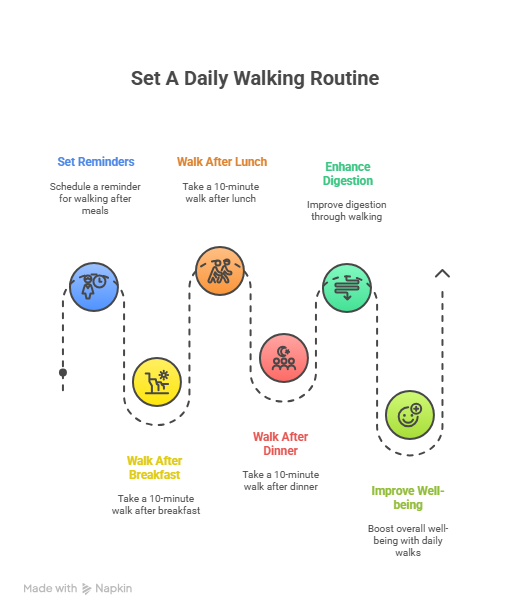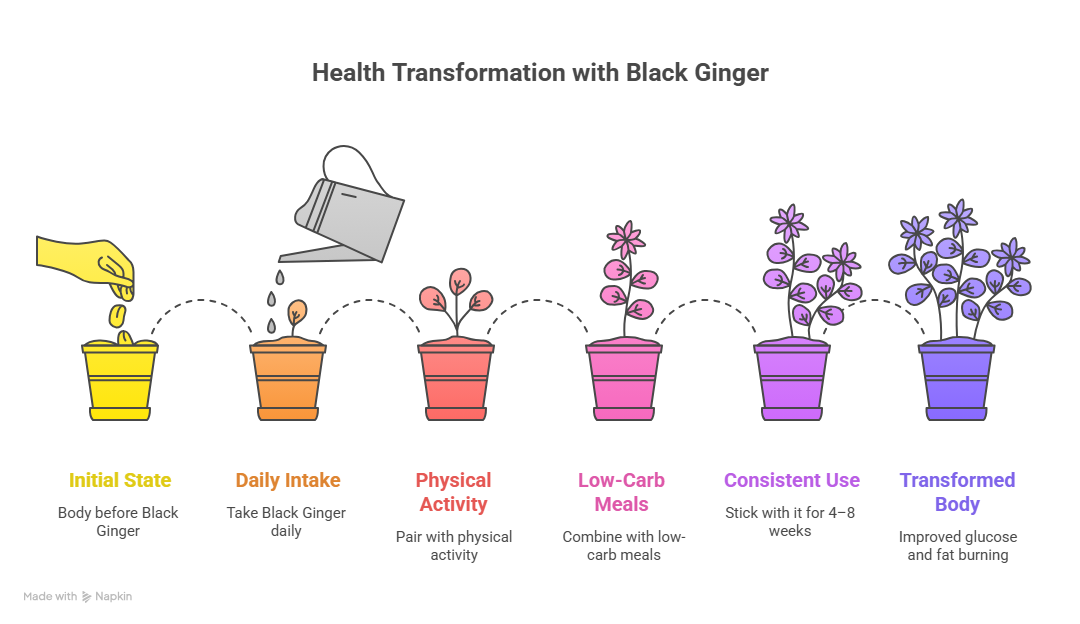
Visual Tips
👀 Visual Tip #1: The Balanced Plate Rule
🟢 ½ Plate – Non-starchy vegetables (greens, cucumbers, peppers)
🟡 ¼ Plate – Quality protein (eggs, fish, chicken, tempeh, tofu)
🔵 ¼ Plate – Low-glycemic carbs or whole grains (quinoa, sweet potato)
➕ Add healthy fats (avocado, olive oil, seeds)
Print this plate out. Stick it on your fridge. Use it to guide your next meal.
.png)
👀 Visual Tip #2: Swap Your Drink
Stick this table in your kitchen or phone gallery. Use it when ordering drinks or choosing at the grocery store!
.png)
👀 Visual Tip #3: The “Protein First” Rule
Whenever you sit down to eat, follow this order:
🥚 Step 1 – Eat the Protein
🥗 Step 2 – Eat the Veggies (fibre)
🍚 Step 3 – Eat the Carbs (if any)
This simple change can reduce your post-meal blood sugar spikes by up to 30–50% (according to multiple studies!).

👀 Visual Tip #4: The Fat-Protein-Fibre Guide
Follow this blood sugar-friendly plate guide:
🔺 Fat (avocado, olive oil, nuts)
🔻 Protein (eggs, fish, tofu, tempeh)
🔻 Fibre (leafy greens, chia seeds, non-starchy veggies)
Combine all 3 in every meal or snack. This combo keeps blood sugar stable for hours.

👀 Visual Tip #5: The "Move After Meals" Rule
🚶♂️ 10-minute walk after meals = better blood sugar
Studies show just a short walk after eating can lower blood sugar spikes significantly.
🕒 Set a reminder: “Walk for 10” after breakfast, lunch, and dinner.
It could be the easiest and most effective habit you build for your health.

👀 Visual Tip #6: Black Ginger = Metabolism Switch
🧠 Think of Black Ginger as a “switch” that helps your body:
🔛 Turn on glucose and fat burning
🔛 Turn up insulin sensitivity
🔛 Turn down inflammation
Here’s what you need to do:
💥 Take the right dose daily
⚙️ Pair with physical activity
🥗 Combine with low-carb meals
⏳ Stick with it for at least 4–8 weeks
.png)


